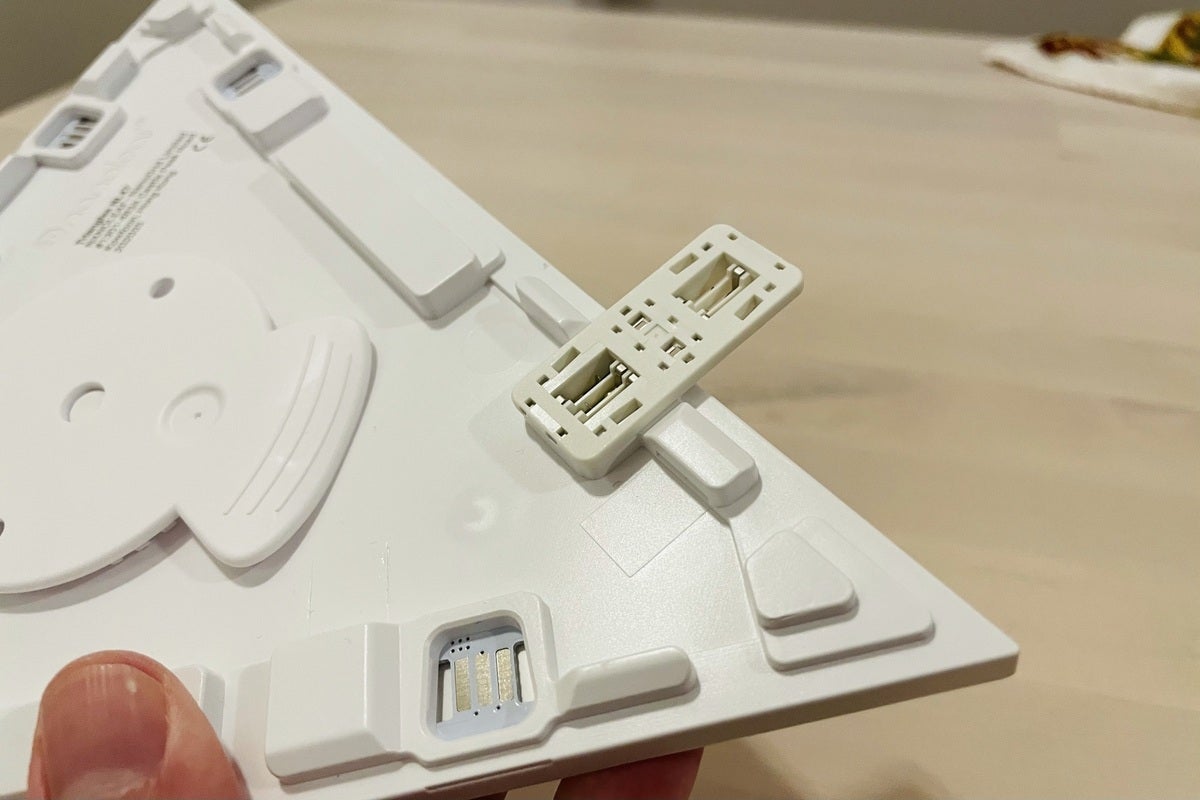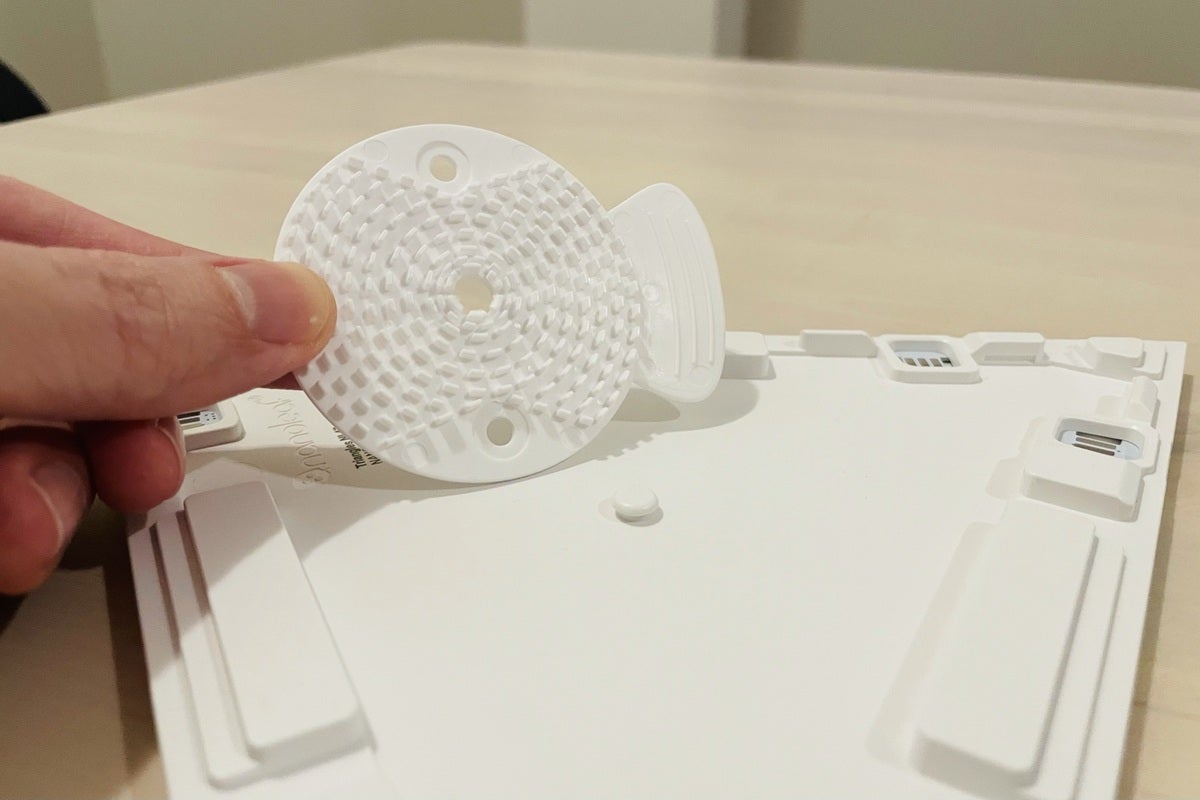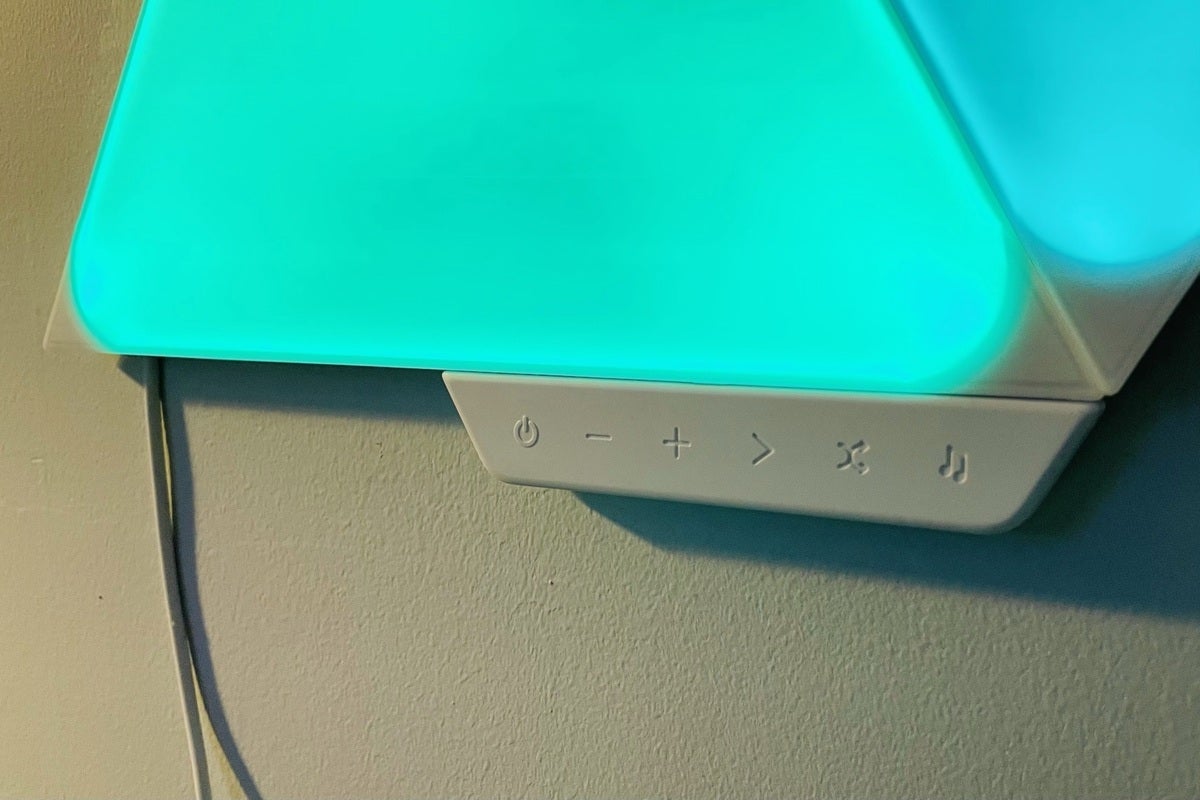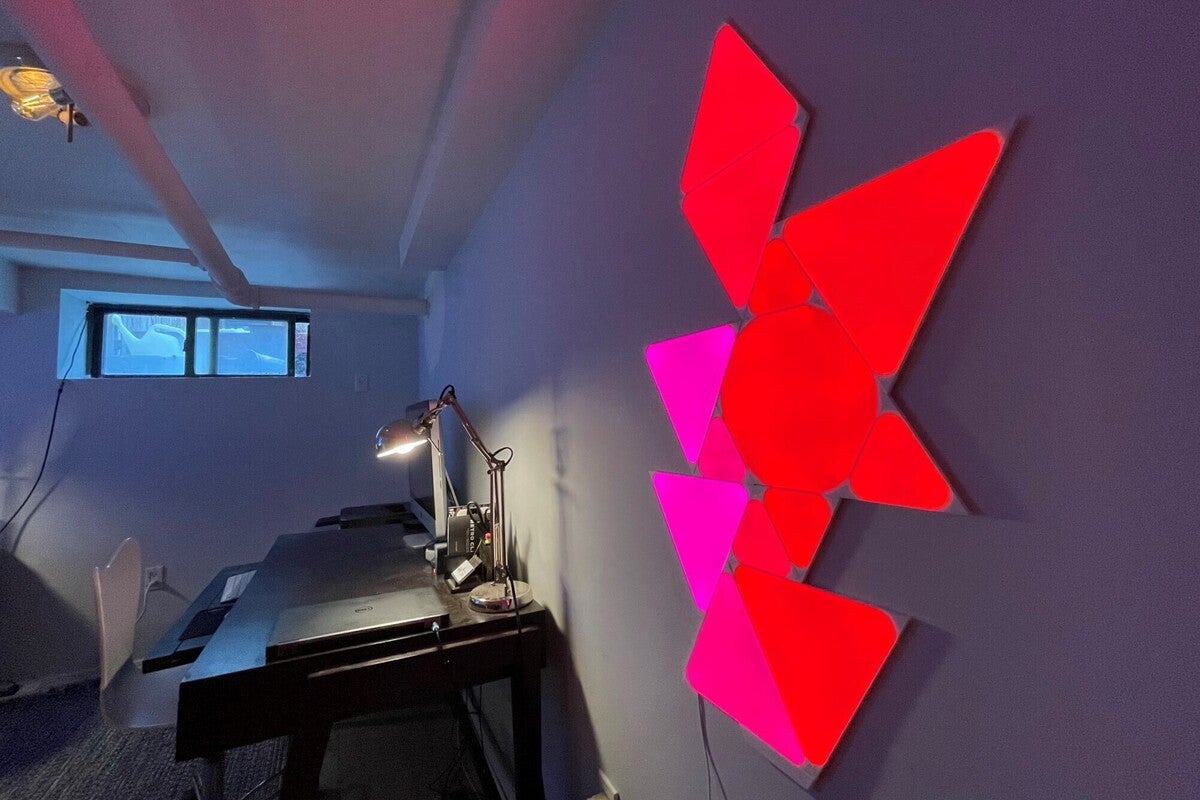With its eye-popping, touch-sensitive Hexagons, Nanoleaf’s new line of Shapes light panels got off to a great start, and the innovative smart lighting manufacturer keeps a good thing going with its new Triangles and smaller Mini TrianglesRemove non-product link counterpart.
Easy to install and designed for mixing and matching, the HomeKit-compatible Triangles and Mini Triangles share the groovy lighting scenes and functionality of the Hexagons, and you can even tap or swipe them to control other smart devices in your home. Like the Hexagons, though, the Triangles and Mini Triangles are expensive, and while they can put on an impressive show, they’re not made with utility in mind.
This review is part of TechHive’s coverage of the best smart light bulbs, where you’ll find reviews of competing products, plus a buyer’s guide to the features you should consider when shopping this category.
Configurations
The Triangles and Mini Triangles are the second and third variants in Nanoleaf’s Shapes series, which itself is the successor to Nanoleaf’s earlier, triangular Light Panels (formerly known as Aurora) and Canvas Light Squares.
The Shapes series comes with a few key differences compared to the Light Panels and Canvas Light Squares. For starters, the small “links” that allow Shapes panels to communicate with each other are now snap-on rather than slide-in, which makes for a far sturdier connection between the panels. Secondly, the Shapes panels now come with a detachable mounting plate for sticking (with the included double-sided adhesive tape) or screwing the panels on a wall, whereas the older Light Panels and Canvas Light Squares had to be mounted directly to a wall. Last but not least, Hexagons, Triangles, and Mini Triangles can be mixed and matched in a single Shapes installation, while the Light Panels and Canvas Light Squares are incompatible with each other.
 Ben Patterson/IDG
Ben Patterson/IDG
The new snap-on links for the Nanoleaf Shapes series is far more secure than the previous slide-in links.
As with the Hexagons, the Triangles and Mini Triangles aren’t cheap. The Triangle “Smarter” KitRemove non-product link, which comes with seven Triangles, a touch-enabled controller, a power supply, and a mounting kit, goes for a cool $200, while the similar, five-piece Mini Triangles Smarter KitRemove non-product link costs $120. You can also buy a three-piece Triangles “expansion” packRemove non-product link for $70, while a 10-piece Mini Triangles expansion packRemove non-product link fetches $120.
Measuring 0.24-inches thick, the 9 x 7.75-inch and 4.5 x 3.8-inch Triangles and Mini Triangles feel light (0.31 and 0.09 pounds respectively) yet reassuringly sturdy. Each Triangle panel can emit up to 80 lumens of brightness, or up to 20 lumens for the Mini Triangles. Individually, that’s not a lot of light, but you could illuminate a room by connecting enough panels together.
Like the Hexagons, the Triangles and Mini Triangles can be tuned from a warm 1,200 Kelvin to a cool 6,500K, and they can emit up to 16 million colors. All of the Shapes panels are rated to last 25,000 hours, and they connect only to 2.4GHz Wi-Fi networks (a common limitation for Wi-Fi-enabled smart lights).
Installation and setup
Mounting the Triangles and Mini Triangles to a wall is surprisingly easy, although you should spend time on a design before you start. If you don’t want to wing it, you can use the Layout Assistant in the Nanoleaf app, which lets you pick the number of Shapes panels you have and then arrange them in different combinations; you can also tap a button to randomly shuffle them until you happen upon a pleasing arrangement. When you’ve come up with a good design, an AR-aided view lets you preview how the panels will look on your wall. In the end, I opted for a vertical design using a combination of Triangles, Mini Triangles, and a leftover Hexagon from a previous Nanoleaf installation.
Once you’re all set with a design, it’s time to start mounting. If you opt to stick the panels to your wall, you simply stick the double-sided adhesive tape to a panel’s pre-attached mounting plate, press the panel onto the wall, then hold it in place and press in a circular motion for about 30 seconds. You can then snap a link onto the back of the panel (although it’s easiest to do so before mourning the panel onto the wall), connect the next panel in your design, and then repeat the adhesive process. Nanoleaf recommends cleaning the surface of your wall before beginning your installation (I skipped that part, with no ill effects).
 Ben Patterson/IDG
Ben Patterson/IDG
The detachable mounting plate on the Nanoleaf Shapes Triangles panel makes for easier removal from a wall.
If you don’t want to deal with the adhesive tape, you can screw the panels into your wall using the two screw holes in each mounting plate. That said, the adhesive is designed for easy (or relatively easy, anyway) removal; you just disconnect a panel from its mounting plate, then pull the adhesive tape down. I was able to remove a few panels from my wall without damaging any paint, although tugging the adhesive tape free requires a fair amount of effort.
When you’re done mounting your Shapes, you’ll need to connect the power cord, which terminates in a chunky, outlet-bocking plug, and a controller, which comes with touch-sensitive power and brightness buttons, plus controls that let you change and shuffle lighting scenes. You can snap those accessories onto any link connector on your panels, wherever it’s convenient. It’s worth noting that there are varying limitations to the number of panels that a PSU can power and a controller can manage; for example, a single controller can handle up to 500 Shapes panels (including Hexagons, Triangles and Mini Triangles), while a single PSU can handle up to 28 Triangles or 77 Mini Triangles. If you’re planning on a larger installation with a mix of Shapes, a calculator on the Nanoleaf site can help you figure out how many PSUs you’ll need.
 Ben Patterson/IDG
Ben Patterson/IDG
The Nanoleaf Shapes Triangle’s power cord and controller can snap on to any available link connectors.
The final step is to connect your Triangles and/or Mini Triangles to your Wi-Fi network using either the Nanoleaf app or the Apple Home app. Using the iOS version of the Nanoleaf app, I tapped the “Start Pairing” option, then scanned a QR code on the power supply, and within a few seconds, the panels popped up in the app.
Features and functionality
The Triangles and Mini Triangles boast the same lighting features as Nanoleaf’s Hexagons, including a vast array of animated light scenes (such as “Vibrant Sunrise,” “Triluminox Energy Crystal,” and even “Netflix and Chill”), along with an integrated microphone that lets the light panels pulse to your tunes. There are also interactive, touch-sensitive scenes and games such as “Touch Paint,” “Whack a Mole,” and “Simon.”
 Ben Patterson/IDG
Ben Patterson/IDG
You can choose from a wide variety of Nanoleaf Shapes themes, from “Vibrant Sunrise” and “Hot Sauce” to “Northern Lights” and “Sundown.”
You can activate the various scenes using the Nanoleaf app, the touch controller, the panels themselves (keep reading for more details), or via a schedule (daily and weekly schedules are available, but no vacation or sunrise/sunset modes) or a customizable playlist. Check out my review of the Nanoleaf Hexagons for more details about the lighting scenes for Triangles and Mini Triangles, but suffice to say that the flashing, rippling, and pulsing light shows are an impressive sight, and they added a much-needed splash of color to my dark office.
Besides interactive scenes and games, the Triangles and Mini Triangles allow you to program touch gestures that let you turn the panels on and off with a double-tap, swipe up or down to adjust brightness, or swipe across to change lighting scenes. You can also configure “touch actions” that let you control other HomeKit-enabled lights or devices by tapping, double-tapping, or long-tapping a panel. There’s even a screen-mirroring feature that lets you sync the Nanoleaf panels with the images on your PC screen (a feature that requires the desktop Nanoleaf app).
The Nanoleaf Shapes series has been designed primarily with HomeKit in mind, but the Hexagons, Triangles, and Mini Triangles also work with Alexa and Google Assistant voice commands and routines (and yes, that includes sunrise and sunset scheduling). There are also integrations for IFTTT, SmartThings, Homey, and Flic.
Bottom line
With its new Triangles and Mini Triangles, Nanoleaf takes another solid step forward with its Shapes series. No, these eye-catching light panels don’t offer much utility, but they make for an easy and reliable way to decorate a room, and their “touch actions” offer an ingenious way to control your other smart devices. We’re looking forward to the next entry in Nanoleaf’s Shapes line, whatever it may be.
"light" - Google News
December 31, 2020 at 06:00PM
https://ift.tt/386EwvT
Nanoleaf Shapes – Triangles review: Variety is the spice of light - TechHive
"light" - Google News
https://ift.tt/2Wm8QLw
https://ift.tt/2Stbv5k
Bagikan Berita Ini














0 Response to "Nanoleaf Shapes – Triangles review: Variety is the spice of light - TechHive"
Post a Comment